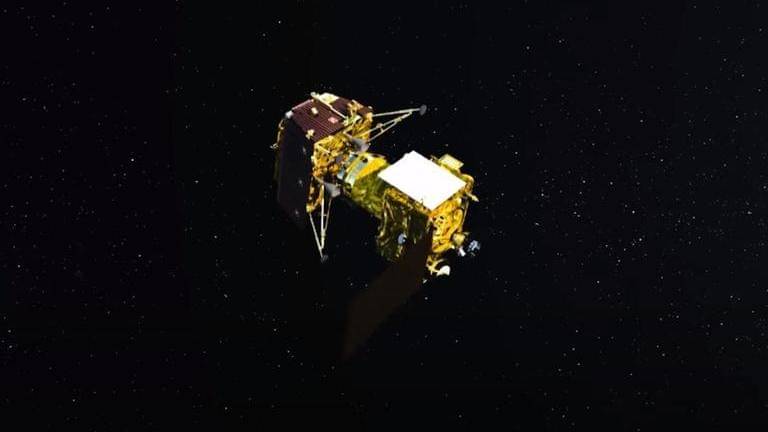Play all audios:
ISRO, on July 15, confirmed that the Chandrayaan-3 spacecraft is in good health as it continues to orbit the Earth in an elliptical orbit. The spacecraft is currently in the process of
escaping the planet's gravity and getting caught by the Moon's gravitational pull. In a tweet, the agency revealed that the Chandrayaan team has successfully completed the first
orbit raising manoeuvre of the spacecraft from ISRO Telemetry, Tracking and Command Network (ISTRAC) in Bengaluru. Chandrayaan-3 is currently in an orbit which would bring it as close as
173 km and take it as far as 41,762 km. After its launch on July 14, the spacecraft was placed in an Elliptic Parking Orbit (EPO) of 170X36500 km. > Chandrayaan-3 Mission update: > The
spacecraft's health is normal. > > The first orbit-raising maneuver (Earthbound firing-1) is > successfully performed at ISTRAC/ISRO, Bengaluru. > > Spacecraft is now
in 41762 km x 173 km orbit. > pic.twitter.com/4gCcRfmYb4 > — ISRO (@isro) July 15, 2023 _(Orbital path of Chandrayaan-3 to the Moon; Image: ISRO)_ The Chandrayaan-3 mission launched on
July 14 at 2:35 pm IST aboard the LVM3-M4 rocket from the Satish Dhawan Space Center in Sriharikota. It is India's third mission to the Moon and a follow-on of Chandrayaan-2 which
launched on July 22, 2019. The mission is currently in an integrated phase meaning the Lander Module (Vikram) and the Propulsion Module are connected. They will stay connected until the
spacecraft enters the Moon's sphere of influence. In the next few days, the spacecraft will make a few more orbits of the Earth until it is sent into a lunar trajectory. ISRO Chairman,
S Somanath said during a press conference after the launch that the process of injecting the integrated module into the lunar orbit will begin on August 1 and will continue until the
anticipated date of landing i.e. August 23. Somanath said that ISRO is targeting 5:47 pm IST on August 23 for a soft landing on the Moon. The Chandrayaan Propulsion Module (PM) will
separate from the Vikram lander when it is 100 kilometres above the lunar surface. It will then begin its mission of studying the spectral and Polari metric measurements of Earth from the
lunar orbit using the Spectro-polarimetry of Habitable Planet Earth (SHAPE) instrument. Chandrayaan-3 has three primary objectives which include demonstration of safe and soft landing on the
lunar surface, demonstration of roving on the Moon and conducting in-site experiments. The lander is carrying a 26-kg Pragyan rover which will roll out to analyse the chemical composition
of the lunar soil (regolith). Both the lander and the rover have a life span of 14 days although an extension is also possible.

